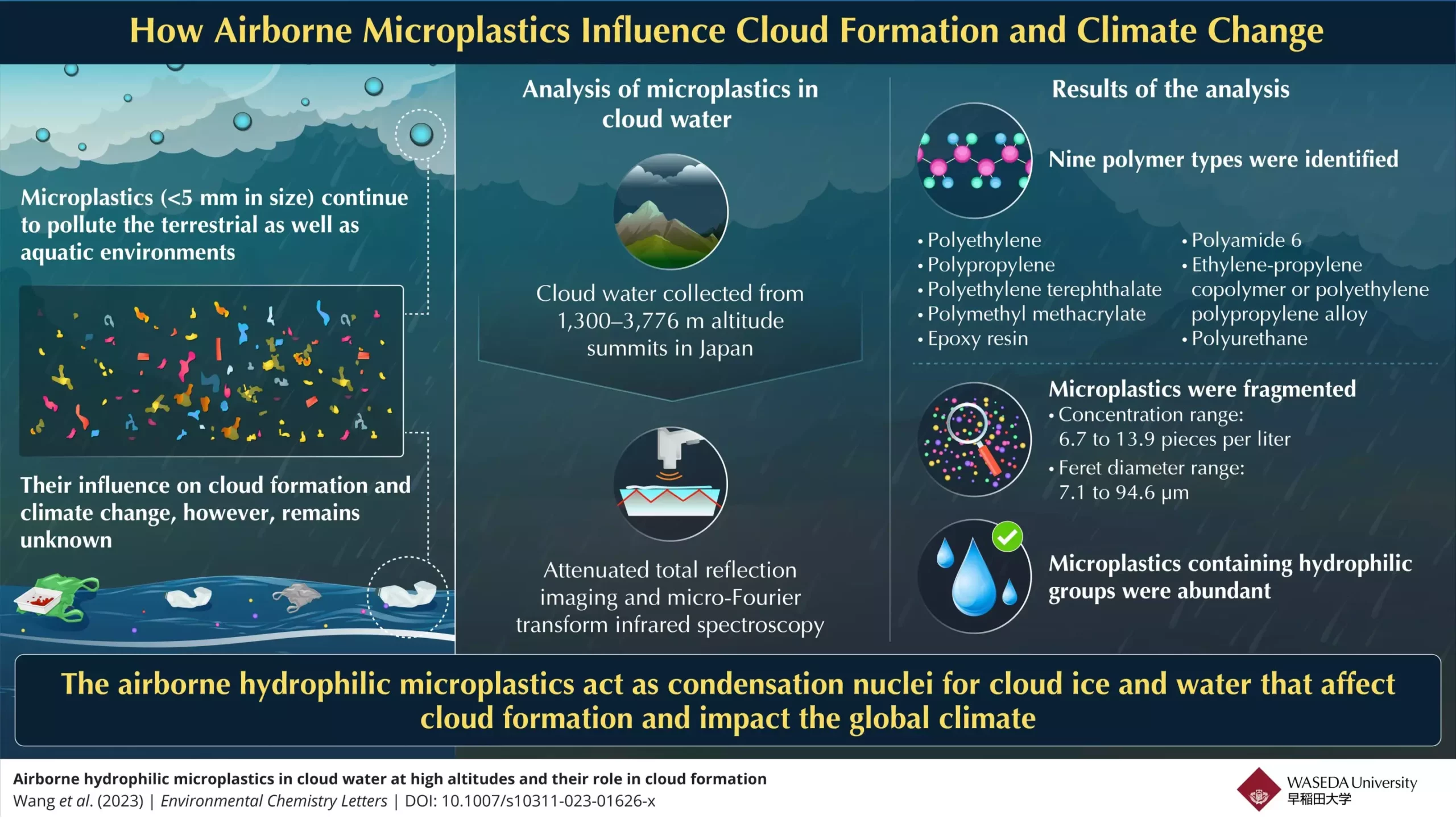Plastic pollution has become a growing concern in recent years, with microplastics being a particular focus of research. These small particles, measuring less than 5 mm in size, are found in various environments, including the ocean and the atmosphere. Studies have shown that microplastics are ingested or inhaled by both humans and animals, posing potential risks to health. In addition, recent research has explored the impact of airborne microplastics on cloud formation and climate change. This article examines a new study conducted by Japanese researchers that sheds light on the path and consequences of microplastics in the biosphere.
The study, led by Professor Hiroshi Okochi from Waseda University, aimed to investigate the role of airborne microplastics (AMPs) in the troposphere and the atmospheric boundary layer. The team collected cloud water samples from different altitudes, including the summit of Mt. Fuji and the south-eastern foothills of Mt. Fuji. Using advanced imaging techniques, the researchers were able to detect microplastics in the cloud water and analyze their physical and chemical properties.
The study identified nine different types of polymers and one type of rubber in the airborne microplastics. Notably, the majority of the detected polypropylene showed signs of degradation and had carbonyl (C=O) and/or hydroxyl (OH) groups. The researchers also found that the Feret diameters of these microplastics ranged from 7.1 µm to 94.6 µm, which were the smallest observed in the free troposphere. Additionally, hydrophilic polymers, which have a high affinity for water, were abundant in the cloud water samples, indicating their role as “cloud condensation nuclei.”
These findings have significant implications for cloud formation and climate change. The presence of airborne microplastics suggests that they play a crucial role in rapid cloud formation. This could have far-reaching consequences for the overall climate and weather patterns. Moreover, the accumulation of microplastics, particularly in polar regions, could lead to ecological imbalances and a loss of biodiversity.
The ingestion or inhalation of microplastics poses potential risks to both human health and animal well-being. Research has shown that these tiny particles can be detected in multiple organs, including the lungs, heart, blood, placenta, and feces. The effects of microplastic exposure on human health are still being studied, but it is concerning that they are found in such diverse areas of the body. Furthermore, the presence of microplastics in the atmosphere raises concerns about the indirect consumption of these particles through “plastic rainfall.”
In order to mitigate the risks associated with airborne microplastics, proactive measures must be taken. It is crucial to address the issue of “plastic air pollution” to prevent irreversible environmental damage and mitigate the impacts of climate change. This includes reducing plastic waste and improving waste management practices to minimize the release of microplastics into the environment. Additionally, further research is needed to understand the long-term effects of microplastic exposure on both human and ecosystem health.
The study conducted by Japanese researchers highlights the presence and impact of airborne microplastics on climate change and human health. The detection of microplastics in cloud water samples provides evidence of their role in cloud formation, potentially influencing larger weather patterns and global climate. Furthermore, the ingestion or inhalation of microplastics raises concerns about the health risks associated with these particles. It is crucial to take proactive measures to address the threat of airborne microplastics in order to protect the environment and human well-being. Only by understanding the full extent of the issue and implementing effective solutions can we mitigate the negative impacts of microplastics on our planet.


Leave a Reply